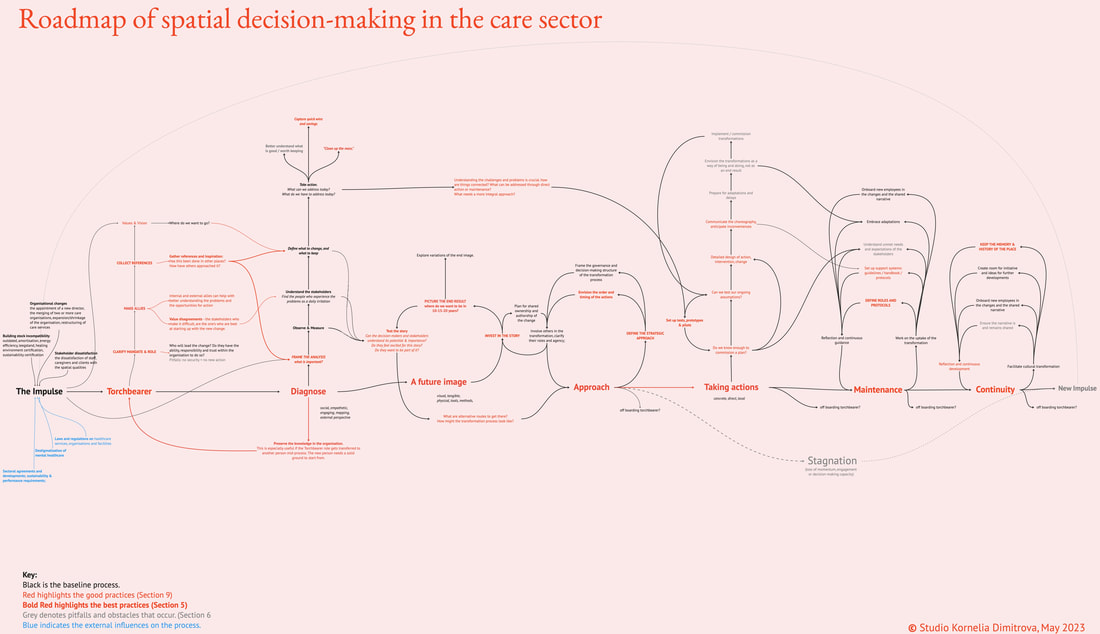Change by Care: Research on transformations in the healthcare sector
|
Changes, transformations and innovations are first and foremost a social process. To make them effective and resilient requires a care-based approach, captivating stories and flexibility. The healthcare sector hold many lessons and opportunities for this approach and method of dealing with change.
But what makes a good and resilient spatial transformation in the care sector, and what can we learn from that for other transformations? To find out, Kornelia Dimitrova interviewed 9 experts who have led this kind of transformations, and brought their lessons and experiences into one visual roadmap. |
Mapping spatial transformations in the care sector.Published on 3 May 2023.
Many healthcare organisations are in the process of such transformations as they look for ways to adapt to the changing societal needs. Frequently, real estate redevelopments overlap with organisational changes. These processes hold many uncertainties, span over longer periods of time, involve a variety of expertises, affect multiple stakeholders and require a chain of strategic decisions. This research set out to grasp the bigger picture of spatial transformations in the healthcare sector in the Netherlands.
For the people shaping and guiding the process of such transformations, the ability to keep a sense of the bigger picture has become ever so important. Envisioning the end result is essential. But the process we create to go there is even more impactful on our ability to reach that point. Having an overview helps with seeing what is really important and keeping it in focus. It helps with managing the changes, expectations and decisions along the way. It facilitates good communication and collaboration and in turn leads to more thoughtful decision-making and a better experience of the transformation. The digital publication below aims to make visible how spatial decision-making works in the Dutch healthcare sector in practice. Over the last 30 years many such transformations have been developed in and with the healthcare sector. This research brought together 9 experiences into one roadmap, giving an overview of the process in practice. It highlights 6 aspects that define a resilient and robust transformation approach. While such a publication can rarely be complete, this roadmap is proposed as a living document, where the dialogue can continue and the experiences knowledge from practice can continue to be collected and shared. |



